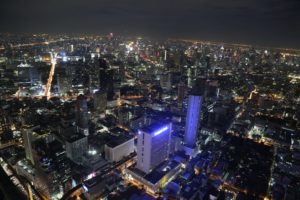
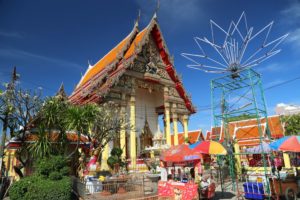 Visiting someplace for the first time can be intimidating, especially in a city like Bangkok which is known for its urban sprawl, incessant traffic, heat and humidity and an always ‘on’ energy. One’s first visit to this city can be overwhelming due to sensory overload. However, with some proper planning combined with a sense of adventure, visiting Bangkok will be a safe, memorable, enjoyable and fun experience.
Visiting someplace for the first time can be intimidating, especially in a city like Bangkok which is known for its urban sprawl, incessant traffic, heat and humidity and an always ‘on’ energy. One’s first visit to this city can be overwhelming due to sensory overload. However, with some proper planning combined with a sense of adventure, visiting Bangkok will be a safe, memorable, enjoyable and fun experience.
Airports
Visitors typically arrive in one of two main airports in the city. Suvarnabhumi is the larger and more modern of the two and is Thailand’s primary hub for international flights. Don Muang is the older and smaller airport serving primarily domestic flights but also regional international destinations. Both airports are serviced by public rail, operating 365 days a year from 530AM until midnight, providing quick, affordable and easy access into the center of the city. Flights, trains, buses, and ferries within Thailand (as well as other destinations) can be booked with 12Go.
Two important services are available in each of the airports: Money exchange/ATM machines and vendors selling sim cards (physical and eSim). Data plans are reasonably priced and are available for short or longer stays. We recommend visiting an ATM to withdraw a small amount of money for basic early trip necessities.
The best exchange rate for those staying longer or desire more money is the main branch of Super Rich Money Exchange next to Bangkok City Inn on Rajdamri Road, near the massive Central World shopping complex. They also maintain numerous branches throughout the city including at some of the Skytrain stops but the rates at these locations are not as lucrative.
Where to Stay
Hotels are located throughout the city; however, we recommend staying in one of four primary parts of Bangkok.
Lower Sukhumvit features loads of nightlife, massage parlors, restaurants, and street food. There is no shortage of energy here, day and night. And this part of the city offers a wide variety of accommodation for all budgets. And it is easy to get around as The Skytrain services numerous stops.
Silom is the heart of the financial district in Bangkok and tends to be a bit quieter than other parts of the city. Dotted with condos and hotels, this part of Bangkok offers plenty of accommodation options for the discerning traveler.
Chao Praya River offers some of the best hotels on the planet, all situated near or along the banks of the river. This part of the city always looks and feels the most exotic with boats and ferries making their way along the river framed by gleaming golden temples. Some of the top hotels here include the historical and iconic Mandarin Oriental Hotel, the Peninsula Bangkok and the Shangri-La Bangkok.
Khao San Road is known for its budget accommodations and attracting a diversity of backpackers from around the world. A stay on Khao San Road or nearby is a great way to meet fellow travelers.
Get Around
Bangkok has two well developed public transportation systems – an underground metro and the Skytrain. Both systems connect to each other and are an integral, cheap and safe way to explore the city.
While ride sharing apps dominate many major cities, they have never replaced taxis in Bangkok. Taxis are cheap and easy to find throughout the city. A green light in the front window means they are accepting passengers, a red light means they are not. Always make sure the driver turns the meter on (starts at 35 baht) and around prominent tourist areas, never request a stopped taxi as they often try to take advantage of tourists by charging higher rates. Tuk tuks are three wheel vehicles covered with a roof but open on all sides. These are common in Bangkok, and like taxis, only request a moving Tuk tuk.
Language
Do people speak English in Bangkok? Yes and no. Most people who work in the tourism industry will speak enough English to get by. Some taxi drivers do, others are more limited in their vocabulary. We always recommend using Google Translate to help facilitate conversation.
Must do experiences

 Bangkok is known for many things, among them food, temples, massage and night markets.
Bangkok is known for many things, among them food, temples, massage and night markets.
Some of the more iconic, oldest and largest temples are located along Chao Praya River including the Grand Palace, Wat Po and Wat Arun. We recommend visits to these in the early morning to avoid some of the crowds which invariably gather regardless of the time of year or time of day. But Bangkok has hundreds of other temples, many of them little visited by tourists. Of the more than 100 we have personally visited and written about in Bangkok, some of our other favorites are: Wat Bench Amabophit, Wat Khun Chan (Jan) Waramattaya, Wat Mahabut, Wat Mangkon Kamalawat and Wat Prayurawongsawas Waraviharn.
Massage businesses are seemingly everywhere in parts of Bangkok. And they are inexpensive! One of our favorite activities especially immediately after a long flight and in a jet lagged state is to get a 2 hour foot massage. We are sleeping within the first 5 minutes.
Thai food is among some of the most flavorful cuisines on the planet with its diversity of intense ingredients, hot chili peppers and other spices. Street food is common and is often just as good as food from a restaurant; for those who have weaker stomach, use general caution when purchasing foods (i.e. make sure it’s well cooked).
Night markets are very popular, with new ones opening every year. They often offer a variety of products including hand crafted items and a diversity of food and drink. Floating markets are generally held on the weekends during the day.
—
We recommend at least a few days to explore Bangkok. The first day may be overwhelming, you may be recovering from jet lag and you may want to leave; don’t leave! The second day you will start getting used to the city’s energetic vibe and by day three or four you will be falling in love with its unique environment and experiences.
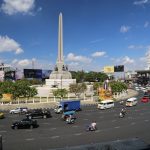
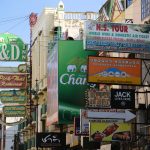
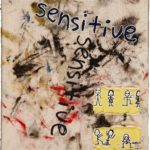


Practical tips and insider info from someone who’s called this place home for more than 20 years.